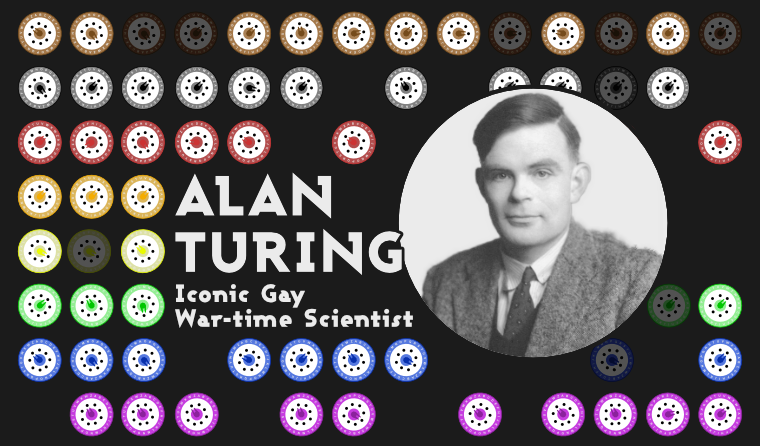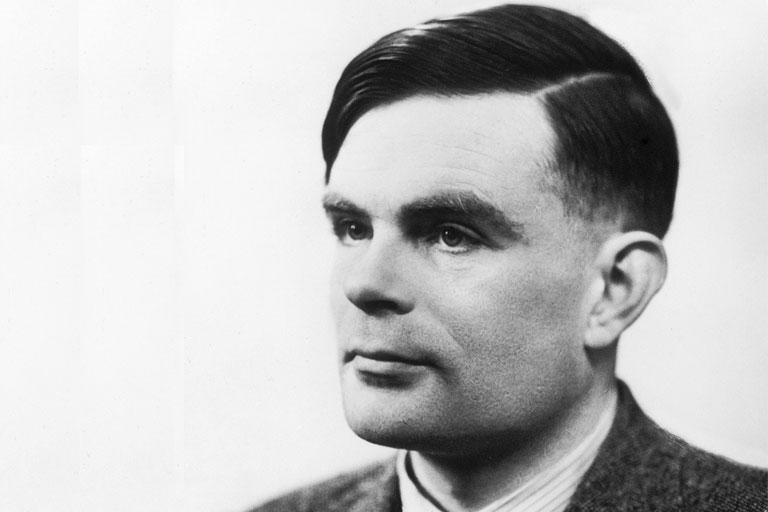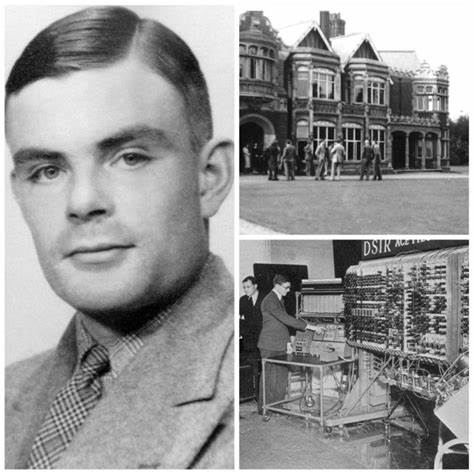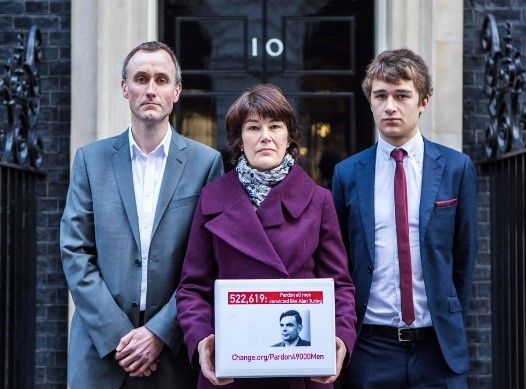Alan Turing: Iconic Gay War-time Scientist
Alan Turing was nothing short of a scientific genius whose life and contribution to the British war effort (World War 2) has been significantly made more widely known to the public through the film ‘The Imitation Game’- in which Benedict Cumberbatch plays Alan Turing. Turing was a Mathematician, logician, computer scientist, cryptanalyst, philosopher and theoretical biologist. He was also gay which I will speak more about later in the article. Turing has also been described as formalising ‘concepts of algorithm and computation’ which ultimately led to the invention of the ‘Turing Machine’. As such, he is generally considered to be the ‘Father of theoretical science’ which also includes artificial intelligence.
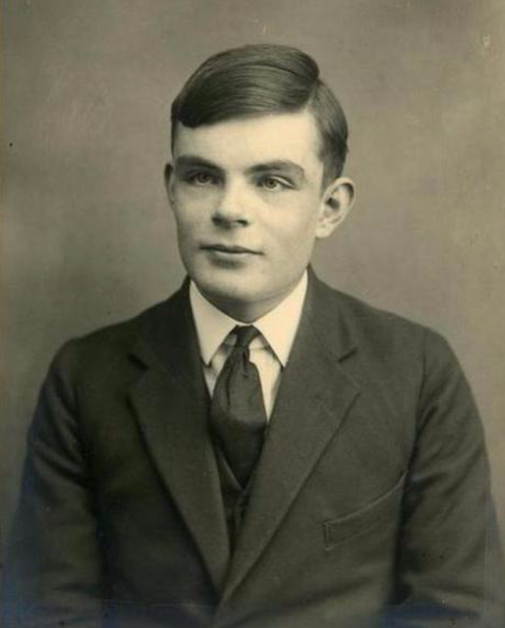 Alan Mathison Turing was born in London on 23rd June 1912. He is mostly known for his academic achievements for having made significant and important contributions to mathematics, cryptanalysis and mathematical biology. Turing also contributed to new scientific disciplines that would be renamed: computer science, cognitive science and artificial intelligence life.
Alan Mathison Turing was born in London on 23rd June 1912. He is mostly known for his academic achievements for having made significant and important contributions to mathematics, cryptanalysis and mathematical biology. Turing also contributed to new scientific disciplines that would be renamed: computer science, cognitive science and artificial intelligence life.
It should come as no real surprise that such an intelligent young man, with a keen scientific mind should have entered the University of Cambridge in 1931 after having been educated at a top private school. Turing was elected to a fellowship at King’s College after graduating in 1934, for his excellent research in ‘probability theory’. Turing went on to write a seminal paper ‘On Computable Numbers, with an application to the ‘Entscheidungs problem’ and ‘Decision Problem’. At the time there was the emerging science of computing and Turing’s method in its application had ‘profound significance’ for this new scientific discipline.
Turing went on to study for a PhD in mathematical logic at Princeton University under Alonzo Church – studies he completed in 1938. Turing ultimately went on to invent the ‘Universal Turing Machine’, which was based on the same logical principles of a digital computer. Previously the various attempts at mathematical problem solving had been carried out by rote by humans who were actually designated as ‘computers.
Turing, after returning from the United States went on to join the ‘Government Code and Cypher School’. He also joined the war time organisation’s headquarters at Bletchley Park after the outbreak of war in September 1939. During WW2, the Germans used a cypher machine known as ‘Enigma’ which was their principle device used to encrypt radio communications. The Polish Government had some initial success against Enigma that they shared the details of with Britain and France. It was during the autumn of 1939 and the following year that Turing and his colleagues designed a codebreaking machine which was similar but significantly different to the Polish device known as the ‘Bomba’. By 1942, the Crypto-annalistic team were successfully decoding 39,000 messages each month – the figure rising to 84,000 per month which works out at two messages every minute, night and day.
The code-breaking machine designed by Turing and his team was known as the ‘Bombe’. This device provided the military intelligence with large quantities of information for the rest of the war. The Germans also devised a sophisticated cipher machine that the British referred to as ‘Tunny’. Turing was the first scientist to device the ‘first systematic method’ of breaking the intelligence that was encrypted by this Cypher.
Turing was subsequently rewarded for his achievements by being made an Officer of the Most Excellent Order of the British Empire-OBE at the end of the war.
After the war Turing was recruited to design and create an electronic computer by the National Physical Laboratory, NPL in London. Turing succeeded in doing his Automatic Computing Engine-ACE, being the first ‘complete specification of an electronic stored-program all-purpose digital computer’. However, though the ACE machine design was possible, it was never actually built. Turing’s colleagues at the NPL decided that it was too difficult and perhaps too ambitious. In its place was created a much smaller model – the Pilot Model ACE-1950.
Through the NPL’s lack of ambition, they thus lost the race to create the first working ‘electronic stored-program digital computer’ in the world. This honour instead going to the University of Manchester which housed the Royal Society Computing Machine Laboratory. Turing dissatisfied with the lack of progress at the London NPL became the Deputy Director of the Computing Machine Laboratory.
Having spoken at some length of Turing’s career it is here I will turn to his sexuality and personal life. As mentioned above, Turing was gay which unfortunately in this less enlightened era ultimately led to his conviction for ‘indecency’. However many years before this, Turing had apparently proposed marriage to a colleague mathematician and cryptanalyst, but the ‘engagement was short lived’.
Turing’s conviction with a previous partner was for ‘gross indecency’ which was legally according to section 11 of the Criminal Law Amendment Act of 1885. This followed Turing’s acknowledgement of a sexual relationship with Arnold Murray. Turing was 39 in 1952 when he had started a relationship with Murray – ‘homosexual acts’ were still a criminal offence in Britain at the time. It was the 23rd of January of this year, that Turing’s house was burgled. Murray subsequently revealed that the burglar was an acquaintance of his and thus Turing reported the crime to the Police. It was during the investigation that Turing’s homosexuality was revealed.
The ultimate outcome of Turing’s conviction was having to undergo a highly invasive procedure – commonly referred to as ‘chemical castration’. At the time this was the indignant alternative to prison. Furthermore, the alternative was a form of conditional probation. Turing had to accept having injections of what used to be referred to as stiloboetrol (known as diethylstilboestrol) which is in fact a form of synthetic oestrogen. In other words, Turing had to undergo hormonal physical changes, ultimately resulting in ‘feminization’ of his body and rendering him impotent.
Due to Turing’s criminal prosecution, he was henceforth denied security clearance, barred from continuing his work in crypto-graphic consultancy for the Government Communications Headquarters-GCHQ, though he was permitted to keep his academic job. He was also restricted from travelling to the U.S.A, but he could visit other European countries if he so wished.
Sadly, it wasn’t until 2009 that Alan Turing received a Government apology and granted a Royal pardon – suffice to say it was too little and too late. It was John Graham Cumming, a British Programmer who had acted by starting a petition to apologise for Turing’s conviction for homosexuality. Gordon Brown (Prime Minister at the time) released a statement of apology, in acknowledgement of the petition which had received 30,000 signatures. This was the 10th September 2009. Alan Turing died on the 7th June 1954 – he was 41.
